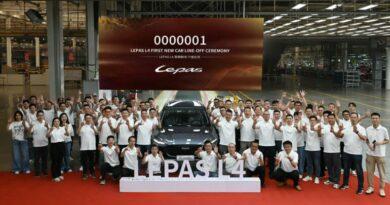Origami Guarantees Lexus ES Quality
The hand-stitched finish on the dashboard is just one example of the high levels of luxury and quality evident in the new Lexus ES which is built exclusively at the Miyata plant in Japan.
Completed by one of only 12 select craftsmen, the high quality finish is a result of intense recruitment, training and testing.
One such test involves folding an origami cat from a flat piece of paper with one hand in under 90 seconds. This level of craftsmanship extends to the entire
ES production process – which is overseen by 19 ‘Takumi’, or master craftsmen, who train, recruit and evaluate the results of the entire 7,700 ES production facility staff.
According to Toshio Yoneoka, General Manager of the Miyata plant, everything from component construction, assembly and paint to final testing comes under the ever-watchful gaze of the Takumi. In addition to devising and overseeing the training programme, Takumi also work with technicians to adapt and improve existing equipment to achieve better results in the production process. In the paint facility, Mr Yoneoka said that an important component of training is to give the trainees precise, measurable feedback on their progress.
“A good example is the painting process where the surface is polished with gauze pads. We’ve determined that the optimal pressure to apply is 700 grams, so we use a gauge to measure the exact pressure and show the trainees how close they are to the ideal,” he said.
“At another stage, paint should ideally be sprayed from a distance of 300mm from the inner panel surface, so we have gauges to measure this. We give the trainees not just instructions, but also visible feedback,” Mr Yoneoka said.
Another example of blending the human and machine is in the body construction phase. Mr Yoneoka explains that production line workers who inspect the alignment of parts constantly train their senses.
“Every two hours they refresh their sense of touch by running their fingers along a sample section of perfectly aligned parts, to memorise the correct ‘feeling’ of those parts,” Mr Yoneoka said.
Where appropriate, human senses are backed up by mechanical sensors. For example, imperfections in the stamping process can be detected using a specially designed thermal imaging system which replaced the visual and tactile inspections that were previously relied upon.






